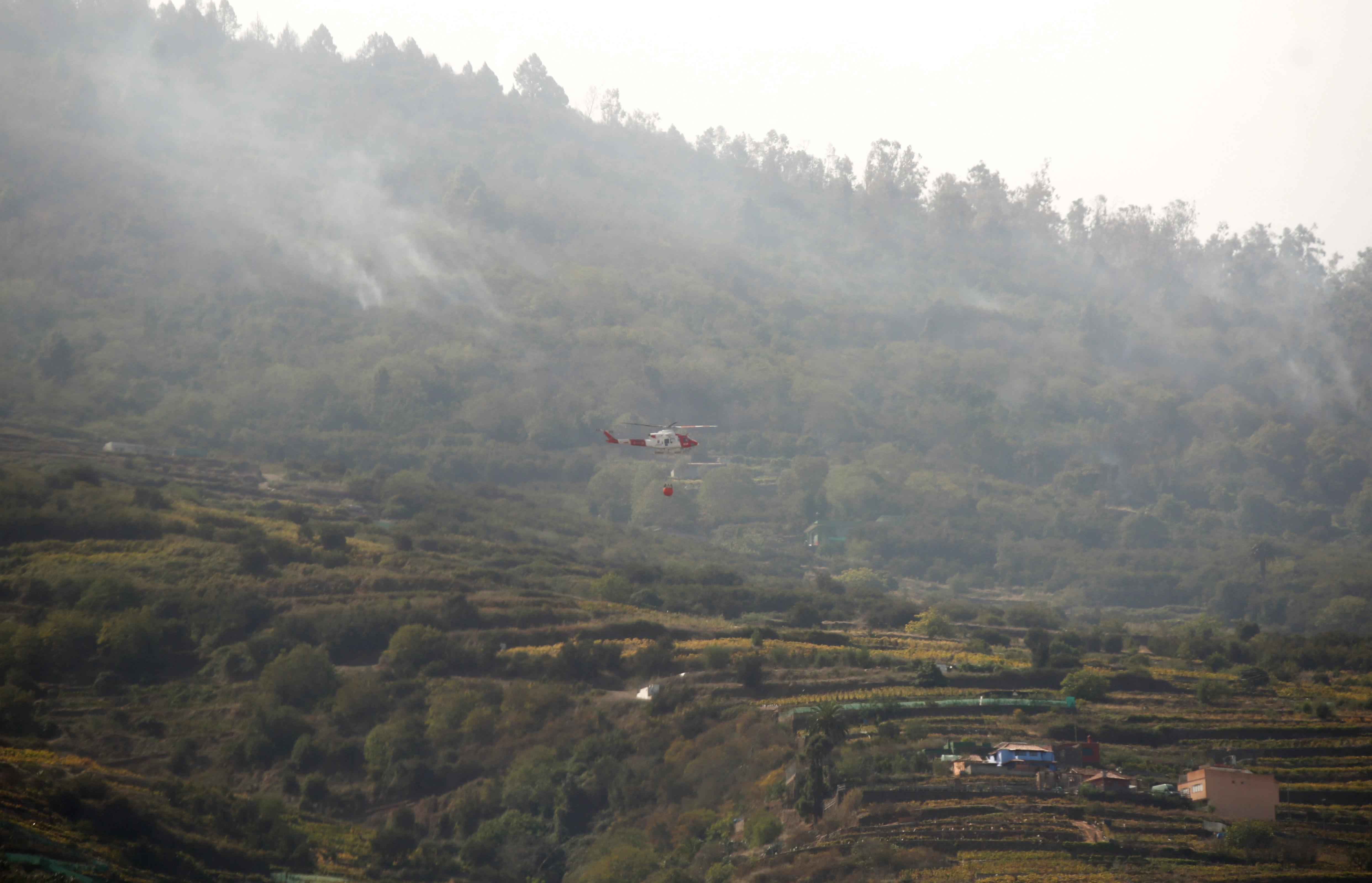 A picture taken on Oct 5, 2023 shows a helicopter set to unload water in the peaks of the municipality of Santa Ursula, in the area of La Corujera, during the forest fire that began the day before, on the Canary Island of Tenerife. Wildfire on Spain's Tenerife has forced 3,000 people to evacuate, AFP reports on Oct 5, 2023. (PHOTO / AFP)
A picture taken on Oct 5, 2023 shows a helicopter set to unload water in the peaks of the municipality of Santa Ursula, in the area of La Corujera, during the forest fire that began the day before, on the Canary Island of Tenerife. Wildfire on Spain's Tenerife has forced 3,000 people to evacuate, AFP reports on Oct 5, 2023. (PHOTO / AFP)
TENERIFE - More than 3,000 people on the Spanish island of Tenerife evacuated their homes as a wildfire sparked by high temperatures and strong winds raged in a forested area already ravaged by fire in August.
Emergency services said on social media they had requested assistance from the army's Military Emergency Unit, saying the blaze, which ignited on Wednesday, was a high-level emergency.
ALSO READ: Thousands evacuated on Spain's Tenerife as summer wildfire re-ignites
August's wildfire burned for days, destroying some 15,000 hectares (37,000 acres) of woodland within the national park surrounding the Mount Teide volcano, Spain's highest peak. Thousands were also evacuated then, with most returning to their homes.
"The temperatures will remain higher (than usual), so we expect more fires to be reactivated in the area," Rosa Davila, head of Tenerife's local government, told a news briefing.
National weather service AEMET said Spain as a whole registered a record six consecutive days of unseasonal heat between Sept 28 and Oct 4 and more were expected
She gave no estimate on when those evacuated can return to their homes. Around 30 hectares have been affected since Wednesday evening, she said.
Tenerife, one of the Canary Islands in the Atlantic off northwest Africa, is on alert for high temperatures that are expected to reach 39 degrees Celsius (102.2 degrees Fahrenheit) throughout Thursday.
READ MORE: Tenerife firefighters stabilize huge wildfire after nine days
National weather service AEMET said Spain as a whole registered a record six consecutive days of unseasonal heat between Sept 28 and Oct 4 and more were expected.
Scientists have linked searing temperatures and dry and windy conditions in many parts of the world, including southern Europe, to climate change.
 Pedro Martinez, technical director of fire extinction of the Island Council of Tenerife, talks to media at the Advanced Command Post in the municipality of Santa Ursula, in the area of La Corujera, on Oct 5, 2023 during the forest fire that began the day before, on the Canary Island of Tenerife. (PHOTO / AFP)
Pedro Martinez, technical director of fire extinction of the Island Council of Tenerife, talks to media at the Advanced Command Post in the municipality of Santa Ursula, in the area of La Corujera, on Oct 5, 2023 during the forest fire that began the day before, on the Canary Island of Tenerife. (PHOTO / AFP)
The August fire had been brought under control but never completely extinguished, with embers still burning in the forest.
Usually, it takes two or three months to completely extinguish a large wildfire if there is rain and humidity but current temperatures above average make it more difficult, local emergency services said. Stable dry weather increases the risk of fires and drought.
Still, the Canary Islands regional leader, Fernando Clavijo, was optimistic the blaze on the already scorched terrain could be brought under control.
READ MORE: Canada wildfire: All 20,000 Yellowknife residents evacuating
"There is less fuel (for the fire), so it shouldn't get out of hand," he told a business event in Madrid on Thursday.
Wildfires often occur during the summer months in Spain and neighboring Portugal and are rarer in the autumn. However, in October 2017 the two countries suffered hundreds of large blazes that claimed the lives of 45 people in Portugal and four in Spain.


